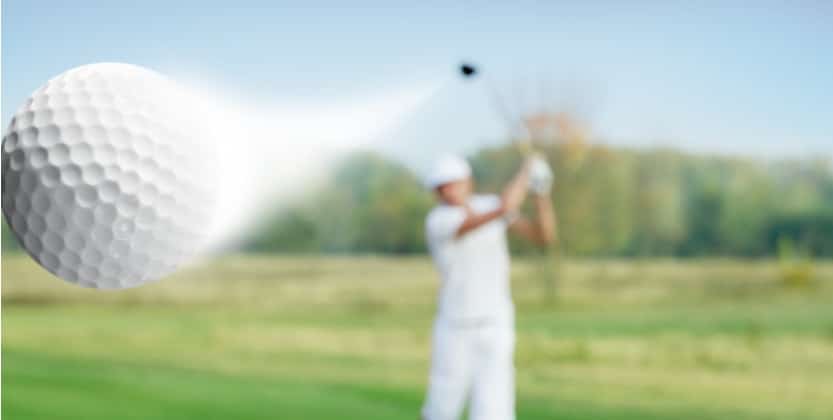Spending a Sunday afternoon on the golf course can sound perfectly relaxing - just what the doctor ordered! Unfortunately, any golf course regular is well aware that golf can go from a peaceful game to a high impact sport in the blink of an eye. Getting hit by a golf ball is no joke - with a velocity of 148 mph upon impact, the force of impact can knock the wind right out of you. Suddenly "just what the doctor ordered" turns into actually needing to visit the doctor, and a pile of medical bills.
Suffering an injury from your time on the golf course can be stressful, especially if you're unsure of who is liable for your injuries. If you've recently been injured on a golf course, keep reading to discover all you'll need to know.

Common Golf Course Accidents
A golf ball's maximum velocity is a whopping 211 mph. Granted, most golfers enjoying a casual day on the course will never reach a swing speed for the ball to travel that quickly. However, even when a golf ball is swung at a typical 100 mph swing speed, it will still be traveling close to 50 mph when it hits the ground. If you, or any part of your body, intercepts a golf ball on its way down, a variety of injuries can occur.
But, errant gold balls aren't the only thing to look out for on the golf course. Accidents frequently experiences on golf courses include:
- Being struck by a golf ball
- Being struck by a golf club
- Golf cart accidents
- Slipping due to improper course maintenance
- Tripping over landscaping
- Being struck by another player
When bearing in mind the various players across the golf course, as well as the course itself, it's not surprising that a game of golf can become hazardous.
Injuries Sustained During Golf Course Accidents
Whether you're taking your swing, observing a friend's game, or cruising down the course, accidents can happen at any time. Common injuries experienced by golf course accidents include:
- Lacerations and abrasions
- Bruising of the soft tissue
- Compound skull fractures
- Concussion or other head injuries
- Whiplash
- Broken bones
- Sprains
If you've suffered one or more of these injuries, you may be wondering who can be held accountable. In golf course accidents, determining liability can be a bit tricky. Let's begin to break it down.
Liability for Accidents on the Golf Course
In the case of golf course accidents, liability depends on the type of the accident that occurs. Typically, a golf course will present signage throughout the area, from the main office to score cards, and even within the greens. This signage is to state that the course is not liable for injuries that could reasonably occur while golfing.
For instance, if an errant ball or club strikes another golfer, the golf course is not liable. In fact, neither is the golfer who swung the ball or club. This holds true even if the golfer who swung failed to warn fore. This is because by presenting non-liability signage, a course is letting any visitor know that there are inherent risks to golfing on the course - such as balls and clubs, which though they can go awry, are essential to playing the game. By agreeing to golf on the course, you are essentially agreeing that you will take responsibility for any reasonable accidents that occur.
So, when is an accident not considered a reasonable risk?
Golf Cart Accidents
For the most part, being struck by a golf cart can be considered as an inherent risk of being on the course, whether you're on the teeing ground, the fairway, or the rough. Therefore, in many cases neither the golf course nor driver of the cart can be held liable for damages. However, there are two instances in which this does not apply:
- The driver intentionally struck another golfer. If it can be proven that the driver maliciously meant to strike another golfer, the driver would be held liable for the golfer's injuries.
- The driver was drunk. If the golf course provided the driver with enough alcohol such that his or her judgment was impaired enough to strike another golfer, without cutting them off from drinking, the golf course could be held responsible.
Accidents Caused by Course Maintenance or Landscaping
Here as well, by voluntarily entering the golf course, you agree to the inherent risks. However, if a golf course failed to properly maintain the course or the landscaping and a golfer was injured as result, this could be ruled as negligence on behalf of the course. In this case, the course would be liable for damages incurred by the injured golfer.
Who knew a day on the greens could be so dangerous? If you've recently suffered an injury as result of another's negligence, both on or off the course, contact Weinstein Legal today.


